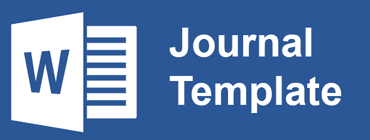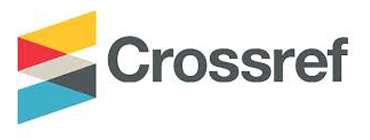THE STUDENTS’ ERRORS IN WRITING EXPOSITORY TEXT AT THE ELEVENTH GRADE OF MAS DARUL FALAH LANGGAPAYUNG
Abstract
This research aimed to analyze the students’ errors in writing expository text at the eleventh grade of MAS Darul Falah, Langga Payung, Labuhan Batu Selatan. In this research, the researcher used a qualitative method. The participant of this research were eleventh grade students of MAS Darul Falah. This research were conducted by snowball sampling and the researcher only took 10 students to write expository text based on the topic they choose in sixty minutes. The data were collected by giving test to the students. The data were analyzed by using documentary technique of Miles and Huberman. It was consisted of three steps were data reduction, and data display and conclusion drawing or verification. The result of the study indicating that there are some errors that made by students such as 6 errors of auxiliary verb (13%), 3 errors of subject (7%), 4 errors of conjuction (9%), 4 errors of article (9%), 3 errors of misformation (7%), 3 errors of misordering (7%), 5 errors of preposition(11%), 4 errors of singular and plural (9%), 2 errors of possesive adjective (4%), 6 errors of lexical (13%), 5 errors of capitalization (11%). From the frequency of each error types, errors of auxiliary verb and lexical errors was the errors which most frequently produced by the students. The students made errors because of their first language (Indonesian logical thinking), or we should say the students mother tongue interference (interlingual source), some students tried to translate the words one by one from Indonesian language into English without paying attention to the English structure rules, and intralingual errors that is caused of errors resulting from complicated system of the target language itself. Besides that the students still confused to arranging the sentences correctly, it is because of the lack of knowledge, grammar, pronoun or poor vocabularies and its use.
Full Text:
PDFReferences
David Nunan. 2003. Practical English Language Teaching. New York: Mc Craw Hill. Daulay Burt and Krashen. 1982. Language two. New York : Oxford University Press. Deporter,B and Hierarcki, M. 2002. Quantum Learning. Bandung: Penerbit Kaifa.
Douglas H. Brown. 2007. Principles of Language Learning and Teaching. Fifth Edition, New
York: Pearson Edition
Gangal, J.K. 2008. Competitive English for Professional Course. New Delhi : S. Chand &
company LTD.
Georget and Wigell. 1994. Making sense of functional Grammar. Sydney : Gerd Stabler. IikNurhikamh. 2013. Improving Students Analytical Exposition Text Writing Skill Through
Guided Promp-Response Active. Pontianak.
Jeremy Harmer. 2007. How to Teach English. England: Pearson Education Limited. Kesidamayanti. 2020. RPP Analytical Exposition.
Maxmenroe. 2020. Text Eksposisi (https://www.maxmanroe.com/vid/umum/text-
eksposisi.html).
Rod Ellis.2015.The Study of Second Language Acquisition, 2nd Edition, New York: Oxford University Press, p. 52
SunardiHasyim. 2002. Error Analysis in the Teaching English. Volume 4, number 1. Tuchman, Kathy. 2005. Curriculum Design for Writing Instruction. California : Corwin
Refbacks
- There are currently no refbacks.

This work is licensed under a Creative Commons Attribution-NonCommercial-ShareAlike 4.0 International License.
INDEXING
Bright Vision by UIN Sumatera Utara Medan is licensed under a Creative Commons Attribution-NonCommercial-ShareAlike 4.0 International License.
Based on a work at http://jurnaltarbiyah.uinsu.ac.id/index.php/brightvision.









